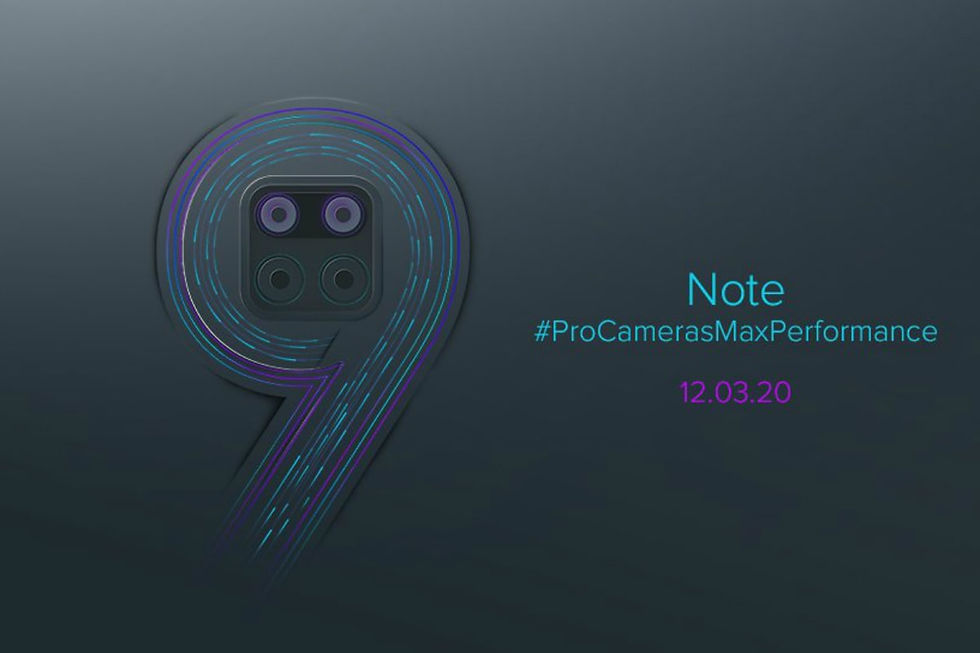Redmi Portrays In-Display Fingerprint scanner for LCD screen , says it is ready for mass production
- Geeky Element
- Mar 9, 2020
- 3 min read
Updated: Mar 11, 2020

Till date In-Display finger scanner was feasible for amoled screens only but Today Redmi China's Vice President and General Manager, Lu Weibing, shared a post on his Weibo page stating that the company's R&D team has been able to develop In-Display Fingerprint scanner for LCD screen that will allow the company to mass produce this latest technology.
The primary problem for fitting such sensors to LCD screens was the thickness of the panel and the presence of a backlight, which stopped light from passing through the screen to the fingerprint sensor beneath. While many smartphones use OLED screens that avoid this problem , Since OLED displays don't require a backlight module, in-display fingerprint sensors can easily transmit optical or ultrasonic signals to complete the fingerprint verification. OLED panel is usually costlier than LCD panel ,Due to which it was usually seen in upper midrange and high end phones.
But Redmi has managed to overcome this limitation with the use of "infrared high-transmittance film material. The working principle of the screen fingerprint is simply to record the characteristics of the fingerprint and feed it back to the sensor below the screen to determine whether it coincides with the fingerprint that had already been registered.
The company says the technology is ready for mass production, which means we may possibly see Redmi phones with LCD optical in-display fingerprint sensors later this year.
The company has also demonstrated it on a Redmi Note 8 Pro, after replacing the screen with the new LCD screen that has an in-display fingerprint scanner. As you can see, the fingerprint recognition looks as fast as an OLED screen, however the fingerprint sensor is present closer to the bottom bezel of the screen.
Till now, in-display fingerprint tech has only been possible with OLED screens, and LCD screen phones needed to have their fingerprint scanners either on the back or on the side. But now, looks like Redmi has found a solution to this problem. This also means that in-display fingerprint tech can reach the more budget friendly phones that have LCD screens.
MY OPINION :
Though this kind of technology might lure some of the buyer of budget category phone but Practically one would get frustrated as LCD's don't support "Always on Display" option . This option is not available because in LCD's, the entire screen lights up if it need to display even a single pixel. If the screen needs to stay on, the backlight should keep running. This will emit a lot of heat and drain the same amount of battery with Always on Display.
On the other hand In an oled screen, only the pixels that emit light powers on. Always on Displays usually use the lowest refresh rate possible with a dim-lit LED which reduces the power consumption alot.
Coming back to LCD's If In-Display fingerprint scanner is implemented Then First user need to lit up the screen using power button and then locate his/her finger to sensor location and then phone unlocks.
Using this new feature might look interesting initially but after some time the user will definitely get bored with this awkward feature.
According to me best option available is to use side mounted finger Print sensor as used in Redmi k30 aka Poco X2 in india. As Physical sensor is much more faster than optical or infrared ones , more reliable and more accurate. Also side mounted rear sensor position is most common position for resting the thumb.
So thats all about it. Do let me know about your thought regarding the same in the comments section below.






Comments